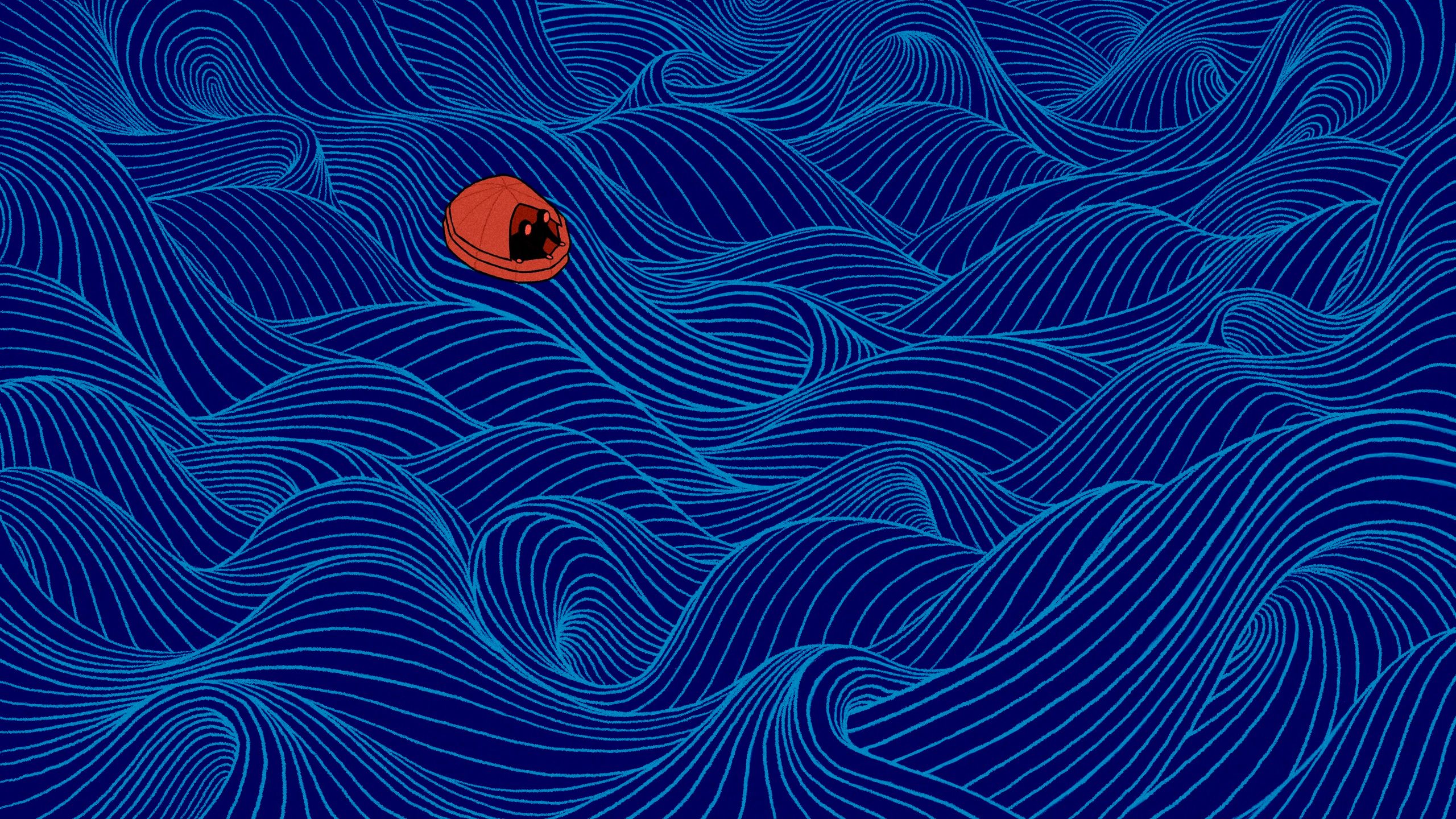
“A Marriage at Sea” Is a Study of Couplehood in Extremis
Sophie Elmhirst’s enthralling account of Maurice and Maralyn Bailey’s adventures on the ocean shows what the common hazards of married life look like amid utter disaster.
“To have chosen such a life, as opposed to having been drugged or crimped or hoaxed aboard, was almost defiant in its sense of alienation,” Geoffrey Wolff writes in his biography of Joshua Slocum, the nineteenth-century merchant sea captain who became the first man to sail alone around the world. Even more provocative was Slocum’s conviction that a domestic life could be built upon the planks of a ship, amid seasick squalor, a mutinous crew, and crazy-making monotony and isolation. He and his first wife, Virginia, whom he wed in Sydney in 1871, spent most of their marriage on various ocean crossings, where Mrs. Slocum hunted sharks and learned to navigate by the stars. “Virginia’s notion of the good life was obviously fueled by her love of adventure,” Wolff writes.
Virginia also had seven children within a decade; five of them were born aboard ship, and, of those, three died in infancy. Perhaps this was the ultimate in defiant adventurousness; perhaps she had little choice in the matter. Virginia wrote about one of her lost children, a baby girl born on a Pacific voyage, to her mother back in Sydney:
About a century later, when an English couple, Maurice and Maralyn Bailey, decided to make their home on the ocean, they had both the resolve and the technical means to remain child-free. “Maurice is problem enough without having children,” Maralyn often said. It was a little joke to deflect nosy inquiries, but there was truth to it—Maurice did have a childlike tendency toward the obstinate, the impractical, and the grandiose. It was Maralyn, a tax-office clerk in the Midlands, who convinced Maurice, who worked at a printing shop, that they should build a boat and live on it, but it was Maurice who refused to bring aboard a radio or electronic equipment of any kind—in order, he said, to “preserve their freedom from outside interference.” They got to experience this freedom in its purest form in 1973, after a sperm whale collided with their boat, destroying it. Husband and wife were set adrift in the Pacific for a hundred and eighteen days, sustained by little more than a raft, a dinghy, and a rapidly dwindling store of tinned food and clean water.
Discover notable new fiction, nonfiction, and poetry.
“They thought of their boat as their child,” Sophie Elmhirst writes of the Baileys, in “A Marriage at Sea: A True Story of Love, Obsession, and Shipwreck” (Riverhead). “To hear her wood tear and splinter was like hearing the pained scream of an infant.” It’s not the only moment in which Elmhirst uses the stuff of parenting and childhood to describe a pair of wayfarers who swore off parenthood and children. Maurice is unsociable and chronically exasperated; he fixates on certain things “the way a child will continually ask for a biscuit once the possibility of a biscuit has been mentioned.” Early in the Baileys’ ordeal, they attempt to row the dinghy while towing the raft behind them, an effort that’s “like trying to drag a tired child up a hill.” Maralyn, starving, maps out elaborate menus for the tea parties and birthday celebrations of the future (“1 plate of doughnut rings,” “1 plate of tarts—mixed,” “1 plate of choc & madeira cake Jelly & fruit & cream”), which Elmhirst describes as “the food of childhood: little sandwiches and tablecloths. Everyone in their best dresses, crumbs down the front.”
“A Marriage at Sea” is an enthralling account of a partnership in extremis, and of how the commonest hazards of married life—claustrophobia, codependence, boundarylessness—become totalized amid disaster. (In “Paradise Lost,” when Raphael tells Adam that “with honour thou maist love / Thy mate, who sees when thou art seen least wise,” he was surely thinking of the Baileys having to poop into a biscuit tin.) Elmhirst sets her reader down inside a world that is both tiny and vast, at once ruthlessly monotonous and violently unpredictable. The Baileys wrestle and suffocate sharks; they gouge out fishes’ eyes and drink the milky ooze; they learn that sucking thirstily at the gills of a fish makes them even thirstier. They keep a turtle as a pet, dote on him, and then they eat him. They wait and wait and wait. (The Baileys’ rescue finally came after they were spotted by the deck man on a South Korean fishing vessel.)
While Elmhirst honors the courage and resourcefulness of the Baileys in visceral detail, “A Marriage at Sea” is skeptical of the couple’s liberation project. Husband and wife wanted to shake off “the cosy oppressions of middle-class England,” but Maurice was far more peevish about it; he disdained his neighbors and peers back on land, who, he wrote, overvalued “prosaic and worldly things—money, property and self-interest.” Yet Maurice, whose psyche is a cage match between his loathing of other people and his loathing of himself, is as preening and prideful an individualist as one could imagine. “They were abandoning everyone they knew to live afloat, alone, unshackled from obligation and community, from all the things that bind a person to a place or its people, from the day-to-day indignities of ordinary life,” Elmhirst writes. She asks, “What is more self-interested than running away?”
A possible answer: appearing alone on the cover of the shipwreck memoir you’ve co-written with your wife. (The book was published in 1974, and erroneously titled “117 Days Adrift.”) Maralyn, in Elmhirst’s telling, was almost certainly more responsible than Maurice for the couple’s ultimate triumph over nature and common sense. When he begins to falter badly—a racking cough, saltwater sores devouring his back and legs and buttocks—she must, for a time, take up the ceaseless domestic labor alone: baling and pumping the leaky raft, catching the fish, slaying the turtles and scooping out their flesh, and tending to Maurice’s wounds. She “had become the adult, in a way, and he the child,” Elmhirst observes. Maralyn’s caregiving talents kept them both alive. But, by dint of her gender, when their story was told, Maurice was cast as the captain and she as first mate.
It was a mercy that the Baileys, unlike the Slocums, had no other family on their doomed boat. And Maralyn was probably right that Maurice was problem enough without having children. (One of the many psychological and narrative strengths of “A Marriage at Sea” is that Elmhirst shows intelligent compassion for this impossible man without concealing her dislike of him.) But, then again, Maralyn was a woman who never shied away from problems. After their Pacific voyage, Maralyn suffered a pregnancy loss that apparently haunted her for the rest of her life. Her sister told Elmhirst that Maralyn, as she was dying of cancer, decades later, “would sit up in bed in the middle of the night and wonder who the child might have been.” She was some kind of mother, after all. ♦

